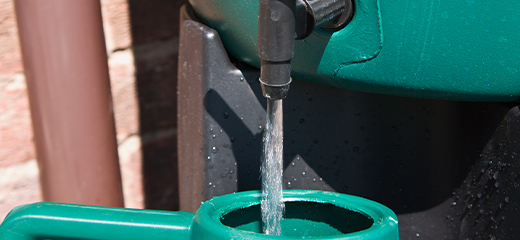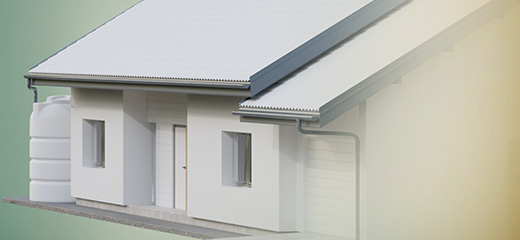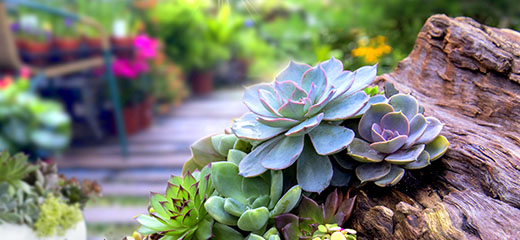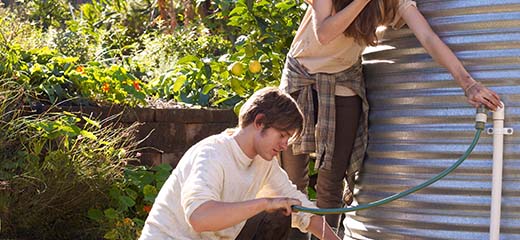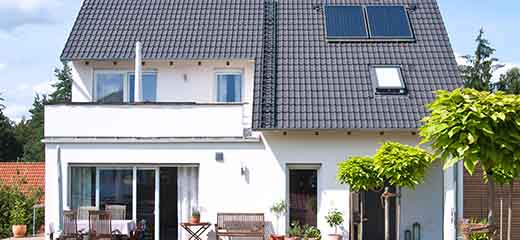
Traditional vs modern rainwater harvesting
Rainwater harvesting has become an increasingly popular strategy for South Africans as they look to reduce monthly water bills and secure backup water supply during outages and shortages. What’s more, rainwater harvesting helps homeowners live more sustainable lives that protect scarce resources and the environment.
Rainwater harvesting is the process of collecting rainwater and storing it for later use in the home or garden. This method has been used for centuries as an alternative source of water for households and, in that time, significant progress has been made in the collection, storage and piping of water to a place of need.
Age-old techniques
Traditional techniques for capturing rainwater include the use of catchment systems, rain barrels, and cisterns. Catchment systems are simple structures that are placed on the roof of a building to collect rainwater. They are made from materials such as concrete or metal and are designed to direct the flow of rainwater into a storage tank.
Rain barrels, on the other hand, are smaller, cylindrical containers placed at the bottom of gutter downspouts to collect rainwater. These days, they are often made from plastic and are an economical option for capturing rainwater.
Less commonly used in South Africa, cisterns are large, typically concrete, underground tanks that are used to store rainwater in areas where the ground is stable and watertight.
While traditional rainwater harvesting techniques have the advantage of being cheaper and easy to install, they are not without drawbacks. Without built-in filtration systems, water in these containers is often contaminated by bird droppings soil, leaves, insects and other debris. The materials are also not optimal for preventing the build-up of smelly algae and can attract insects and other pests. That means your stored rainwater will not be safe to use in your home.
Getting your water from your storage to the different areas of your garden is also not a simple affair. Installing your container at a raised level can allow gravity to do some of the work in pushing your water to where you need it. However, you will need to install a tap on your container which are very often quick to become blocked and damaged by debris in the water. Ultimately, using a bucket will probably be your best option.
Modern methods
Interest in rainwater harvesting has led to many advances in the manufacturing of tanks and creating supporting components to allow optimal storage and health of water as well as options that allow for efficient distribution to where the water is needed. Today, rainwater harvesting tanks come in a variety of shapes, sizes and colours that allow you to select an option that best suits your household and the look and feel of your property.
While other more-costly options are available, plastic or polyethylene tanks are now the most popular due to their low cost and quality. However, not all tanks in this material are equal, and homeowners should speak to providers about whether the tank has been treated for UV-resistance to prevent algae growth and reduced lifespan.
Another important question to ask is whether the tank is BPA-free. Bisphenol A, or BPA, is a chemical compound that is often used in the manufacturing of plastics. When used in the manufacturing of rainwater harvesting tanks, BPA can leech into your water and become a health risk to your family and pets.
Work has also gone into addressing the various challenges that are found in more traditional techniques. Today’s solutions typically feature fittings that make it easier for homeowners to connect their tank to their existing gutters, including rainheads, which act as a pre-filtration device that reduces the amount of organic sediment in the water, and a first flush diverter that diverts the first flow of rainwater that has picked up the sediments and contaminants that has gathered on your roof since the last rain.
Improvements have also been made on the outlet side of tanks with the ability to add pumps – which gives you the pressure to get the water to where you want it, filters – which make the water safe for drinking and cooking, and plumbing systems – which allow you to distribute the stored rainwater into specific areas of the home.
Regardless of the rainwater harvesting method you choose, capturing rainwater can provide an alternative source of water and help reduce the reliance on municipal water supplies.
LookSee's Smart Save journey helps you understand your electricity usage and your savings potential.
